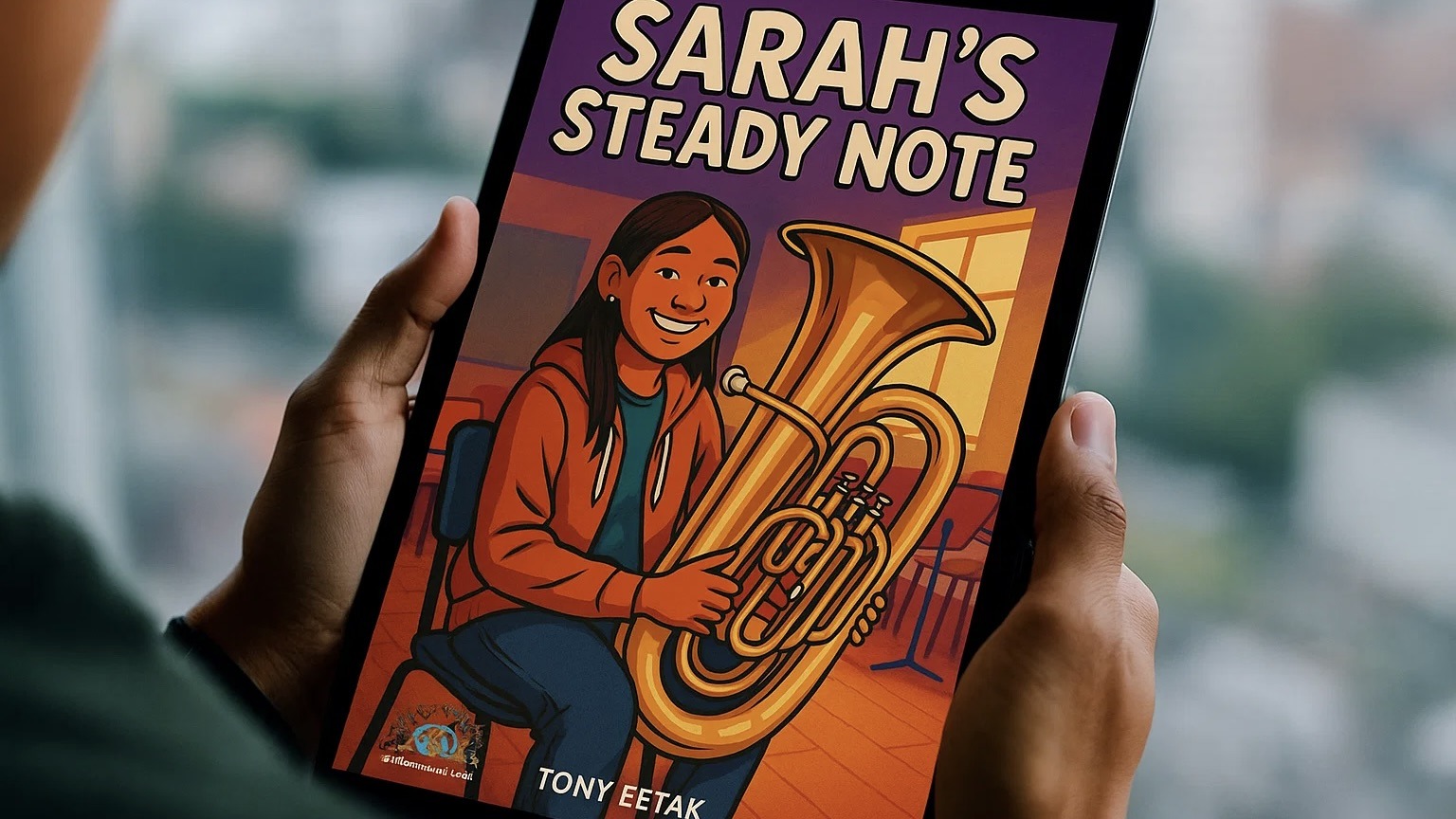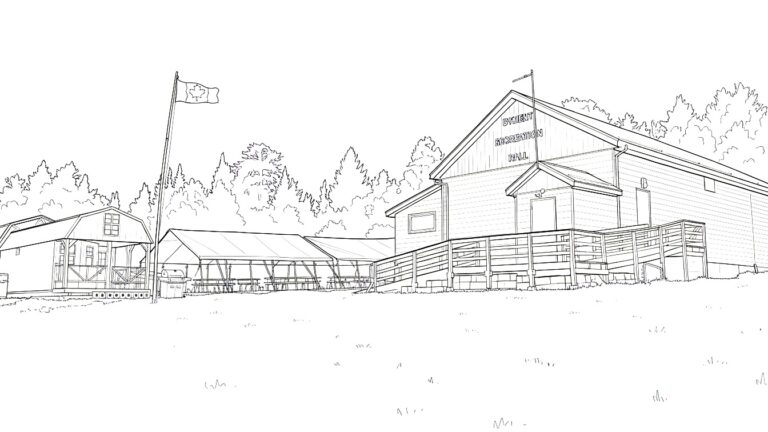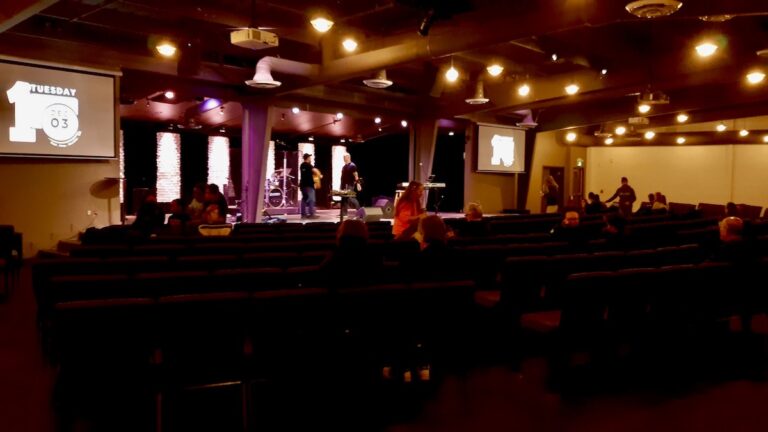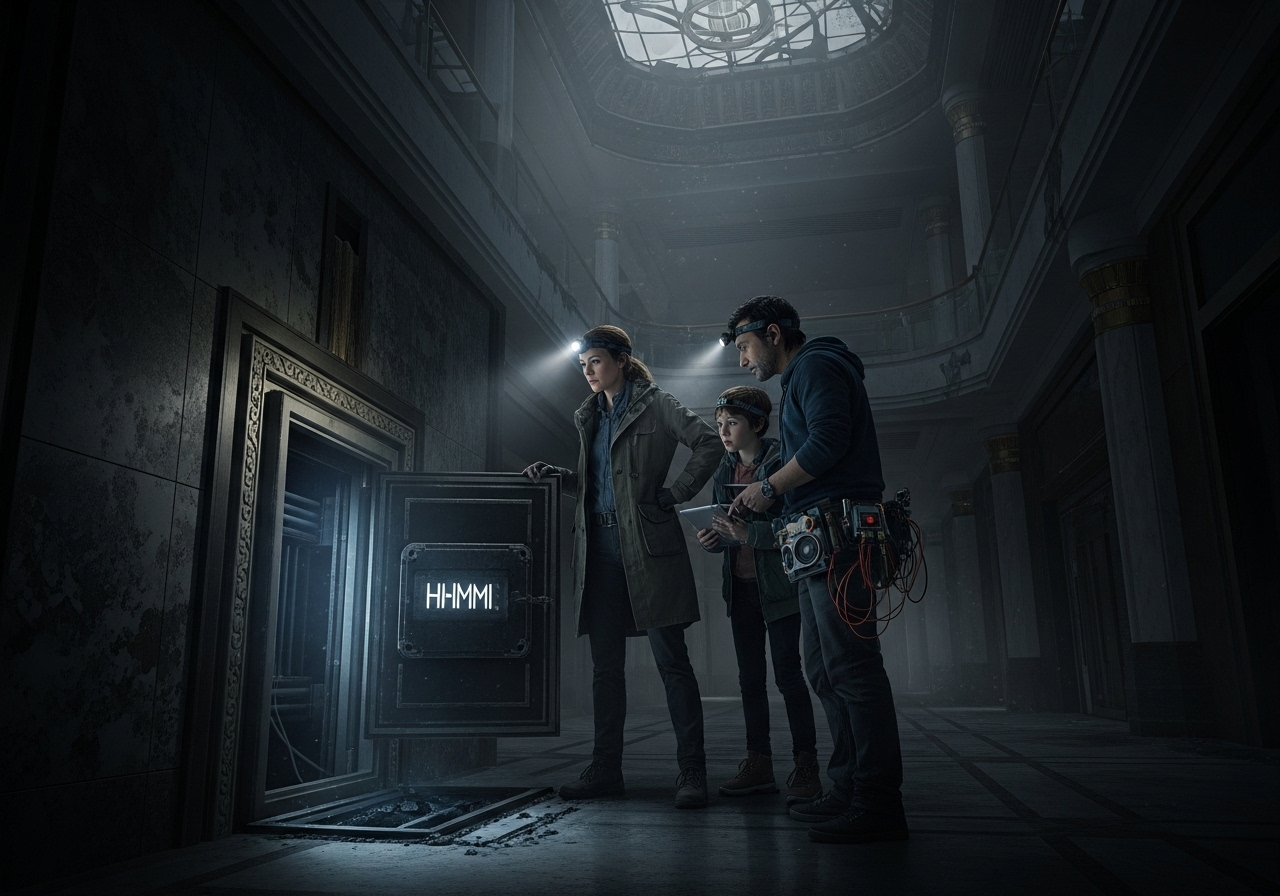
Sarah's Steady Note by Tony Eetak.
Interdisciplinary Practices in Story, Design, and Code
Binding the Digital Book was a summer project exploring the intersection of storytelling, design, and digital craft. The goal was to help young artists and writers not only create stories, but learn how to shape them into professional-quality e-books — works that are as durable, accessible, and intentional as any printed publication.
While creative writing formed the foundation, this phase focused on digital bookmaking as an art form — understanding how structure, typography, and accessibility come together to turn raw manuscripts into cohesive, distributable digital collections. The process became an interdisciplinary learning space where narrative met interface design, and coding met creative publishing.
The Framework: Open Standards as Creative Infrastructure
Every digital collection was built using the EPUB 3 standard, the global open format for e-books. This choice was both technical and philosophical: it ensures that the stories we create remain free from proprietary platforms, readable across devices, and accessible for years to come.
An EPUB file can be understood as a self-contained digital ecosystem — a “website in a box.” It is, at its core, a compressed archive with a precise internal architecture that defines how text, images, and styles come together to form a book. The structure includes:
- mimetype file – The digital signature identifying the file as an e-book.
- META-INF/ – A directory containing the
container.xmlfile, which points to the book’s main blueprint. - OEBPS/ – The heart of the publication, housing the XHTML content, CSS stylesheets, images, and fonts.
This structure taught participants that every digital book has both visible and invisible craftsmanship — a framework that holds the creative work together much like a traditional binding.
Architecture and Metadata: The Invisible Design
At the core of each book lies its package document (content.opf), the architectural plan that defines what the book is. It contains:
- Metadata, built on the Dublin Core standard — titles, creators, languages, unique identifiers (UUIDs), and timestamps that make the work discoverable and traceable.
- Manifest, an inventory of every file within the book — from chapters to images and embedded fonts — ensuring that every piece is recognized by reading systems.
- Spine, which defines the exact reading order — the digital equivalent of sewing the signatures of a printed book together.
These elements form the book’s scaffolding, allowing stories, design, and data to coexist within a single cohesive system.
From Manuscript to Page: Writing in XHTML 5
Once the digital structure was established, participants transformed their stories into semantic XHTML 5 pages, learning how meaning and form interact through code. Using modern HTML elements like <section>, <nav>, and <aside>, each page was constructed with clarity and accessibility in mind.
A key part of this was the epub:type attribute — a semantic layer that provides explicit meaning for reading devices and assistive technologies. A <section epub:type=\"chapter\"> tells a system, “this is a chapter,” just as <nav epub:type=\"toc\"> signals a table of contents. This approach ensured that our books were not just legible, but structured experiences that readers could navigate intuitively — whether by touch, keyboard, or screen reader.
A Cohesive Visual Language
Design coherence was achieved through a single shared stylesheet, style.css, embedded within each e-book. Participants learned to think typographically — balancing readability with aesthetic consistency. Using Georgia for body text and Inter for headings, we achieved a timeless and calm reading rhythm.
Every decision, from line height to paragraph spacing, was approached as part of the visual voice of the book. The layout had to be responsive across screens while preserving a sense of intimacy and care — the same attention one might give to letterpress margins or handmade paper.
Navigation and Accessibility
A book’s beauty lies not only in how it looks, but in how it’s traveled through. Our process emphasized navigation as an artistic and ethical act — ensuring that every reader, regardless of device or ability, could move through the book with ease.
Each collection included:
- A Navigation Document (
nav.xhtml) — an accessible, human-readable table of contents, built as structured HTML rather than static text. - A Legacy TOC (
toc.ncx) for backward compatibility with older e-readers. - A Landmarks Section, providing direct navigational anchors (cover, contents, bodymatter) for assistive technologies.
Accessibility wasn’t treated as an add-on — it was embedded into the design philosophy, ensuring that reading remained an act of dignity and inclusion.
Binding the Digital
The final stage was the binding — compressing all components into a single .epub file following precise order and format. Participants came to understand that this was the digital equivalent of binding a handmade book: aligning signatures, trimming edges, closing the cover.
Each completed e-book became both a technical artifact and an aesthetic object — a proof that storytelling, design, and digital standards can coalesce into something living, lasting, and shareable.
In treating digital publishing as a form of craft, the project reframed code as creative material — as much a part of artistic practice as ink, paper, or paint.
This year’s interdisciplinary arts, story telling and capacity building activities were made possible with support from Art Borups Corners, the Ontario Arts Council Multi and Inter-Arts Projects program, the Labovitz School of Business and Economics, the Minneapolis College of Art and Design Creative Entrepreneurship Program and Global Dignity Canada. Thanks to Jamie Bell, Tony Eetak, Krish Agrawal, Eva Suluk, Terri Bell, Dr. Olaf Kuhlke, Kendall Suluk, Maurice Betournay for supporting this year’s programming.






